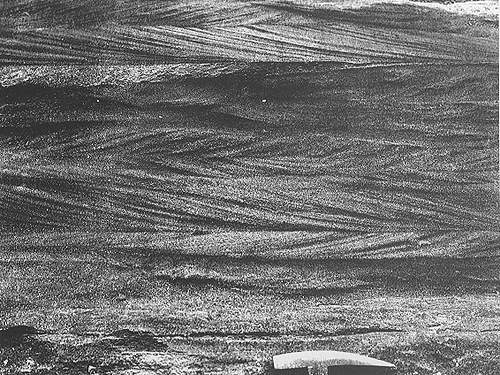
Herringbone cross-bedding
Plate 36

Herringbone cross-bedding
Plate 36
This is a specific type of cross-bedding, which can be regarded as an indicator of process. In the vertical sequence of laminasets, you can note that two opposite dips alternate. This reflects a 180° change in the current direction, which is typical, although not exclusive, of tidal currents. Flood and ebb currents have opposite directions and also, in this case, the same power of transporting sand and making dunes. Each of them bevels the top of the previous bed, producing an erosional truncation of foreset laminae followed by the deposition of a new sand bed. From time to time, discontinuous mud drapes remain preserved in the sand (see color plate 18). Tidal currents mechanically predominate over waves in environments like estuaries and tidal flats, or in more limited areas such as the tidal inlets separating barrier islands within lagoon-beach complexes.
Not always do tidal currents produce herringbone bedding. It frequently happens that one of the flow is much more powerful than the other, which is not able to carry a sufficient amount of sand to build up its own bed forms (see plate 34 B ). The subordinate flow can, at the most, modify the structures produced by the main one; for example, it partly erodes them forming the already quoted reactivation surfaces (plates 26 B, C; plate 33).
In some cases, opposite tidal currents have the same power but spend it along different paths: some channels, for instance, are used by the flood current, others by the ebb current. No herringbone is then found, and one should look for other indicators of tidal setting.
In this picture, the laminae do not show the true dip angle because the section is oblique to the flow direction.
Pliocene intra-apenninic sandstones, Val Marecchia near Talamello, northern Apennines.
| Photo: G. Piacentini 1970. |